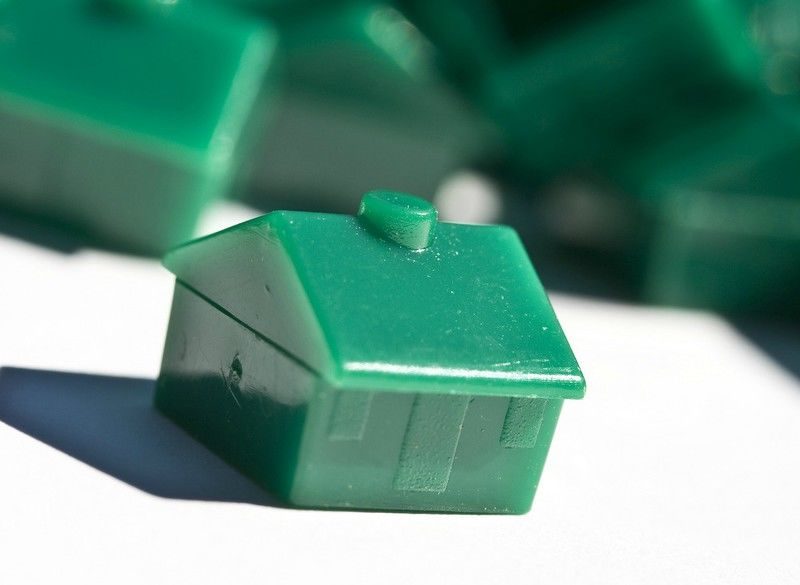
The EU has utilised portfolio standards to cut vehicle fleet emissions, and climate policy advisors are now pushing similar strategies for emissions reduction in buildings, via ‘green’ mortgages to finance deep renovations.
On 14 October, Madrid-based consultancy Climate Strategy released a 60-page report on green mortgage portfolio standards, which, if implemented by the European Commission, would incentivise homeowners and banks to work together to improve the average energy efficiency in homes.
The proposed portfolio standards go hand-in-hand with the Commission’s Renovation Wave, launched just over a year ago.
There are 220 million households in Europe, two-thirds of which were built before any form of energy standards existed. Buildings make up over a third of the EU’s carbon emissions, and making them more efficient is a key part of the EU’s plans to reach net zero emissions by 2050.
The Commission plans to renovate 35 million buildings for energy-related purposes by 2030, reaching an annual rate of 3%. Currently, it sits at just over 1%.
Climate Strategy CEO Peter Sweatman said new regulations are needed to deliver the deep renovations required to meet the EU’s climate goals.
“It’s more than just changing the boiler. It’s really going into the detail of your home and making it very efficient, very comfortable, and better to live in,” Sweatman said.
A deep renovation may cost as much as buying a new car, but it’s not nearly as straightforward. While the vehicle market is generally centralised, homeowners must work with various entities in order to organise and fund their renovation projects. A deep renovation also involves moving out of your home for an extended period of time, which comes at a high cost.
That’s where mortgage portfolio standards come in – banks and mortgage firms would provide homeowners with full renovation packages.
Sweatman told EURACTIV that people with more energy-efficient homes are better protected from energy market spikes, which is increasingly important in the current energy crisis.
“It’s the idea of borrowing to reduce your future costs of homeownership,” he said.
What’s in it for banks?
There is increasing pressure for financiers to align their lending practices with the Paris Climate Agreement. The report explains that just 8% of leading banks’ balance sheets, which include mortgages, are currently aligned with the EU Taxonomy on sustainable finance.
“Many [banks] have made commitments to decarbonise their activities,” Sweatman said. “What better way to decarbonise your mortgage book than taking all of the low-energy performing homes of your clients and upgrading them to much better energy-performing homes?”
In order to make this happen, Sweatman said mortgage lenders must “proactively ask the question” by compiling energy efficiency data, collecting energy performance certificates for customers, and reaching out to homeowners about renovation plans.
It sounds like a lot of work, but Sweatman said it will pay off for homeowners and banks alike.
“This is an opportunity for homeowners who have mortgages to be able to take some money from the bank and put it into a more efficient home, become a better creditor and have a lower bill.”
That is, more efficient energy means cheaper mortgages means better credit for clients.
The mortgage portfolio standards also highlight for banks those who are most at risk of debt, or who may need a renovation in order to afford their energy bills.
And those who live in energy-inefficient homes will experience the biggest gains, Sweatman said. Homes in the European Union are recognised by energy labels, on a scale from A to G. When preparing for large-scale renovations, banks will target the homes with the most room to improve first.
Those who cannot afford mortgages would also benefit from the new standards, he emphasised.
The standards cannot magically “make bankable people who can’t get access to a mortgage,” Sweatman said. But this is where national governments come in: EU member states currently offer grants and subsidies to help citizens renovate their homes. And under the mortgage portfolio standards, people who can afford loans will receive them, and those who cannot will be subsidised by their governments.
“It is really important for us to be providing grants to people who simply can’t afford to heat their homes – people who are at risk and who are vulnerable,” he said.
“Already enough straw in the wind”
Plenty of banks are already on board with the new standards or are implementing their own versions.
Dutch bank ABN Amro finances over 10% of buildings in the Netherlands. By 2030, the bank plans to help bring all the buildings in its €185 billion mortgage portfolio to an average ‘A’ rating by 2030. All of ABN’s company-owned real estate is set to rank ‘A’ within two years.
Homeowners will receive discounted mortgages if they buy homes with a registered energy label of ‘B’ or higher, or renovate their existing homes to that level.
ING, another Dutch bank, joined the Net-Zero Banking Alliance in August. Through its Terra approach, ING aims to bring each of its nine energy sectors, including residential real estate, towards new low-carbon technology and away from current methods.
The UK’S Central Bank, the Bank of England, is on track to reduce “absolute greenhouse gas emissions” by 63% between 2016 and 2030. And Sweatman said all UK banks are expected to reach an average lending portfolio grade of ‘C’ by the same time.
“There’s already enough straw in the wind for people to see that this is the approach which is coming,” Sweatman said. “If you look at the science-based targets initiative, where financial institutions come up with roadmaps for the future, the kind of tools they’re putting out would be described as mortgage portfolio standards.”
[Edited by Frédéric Simon]










